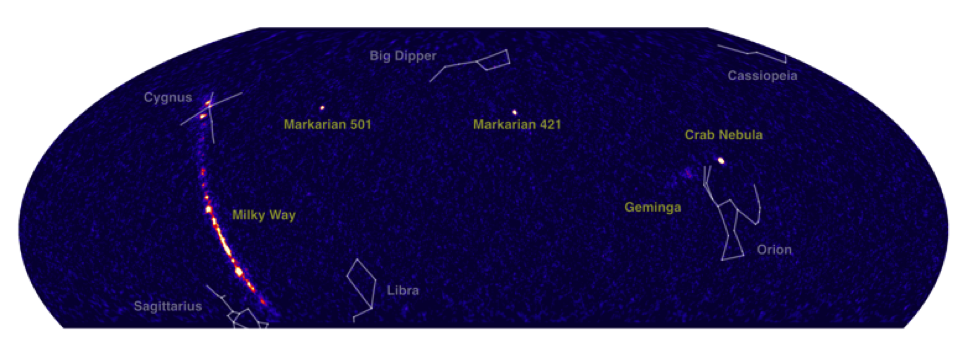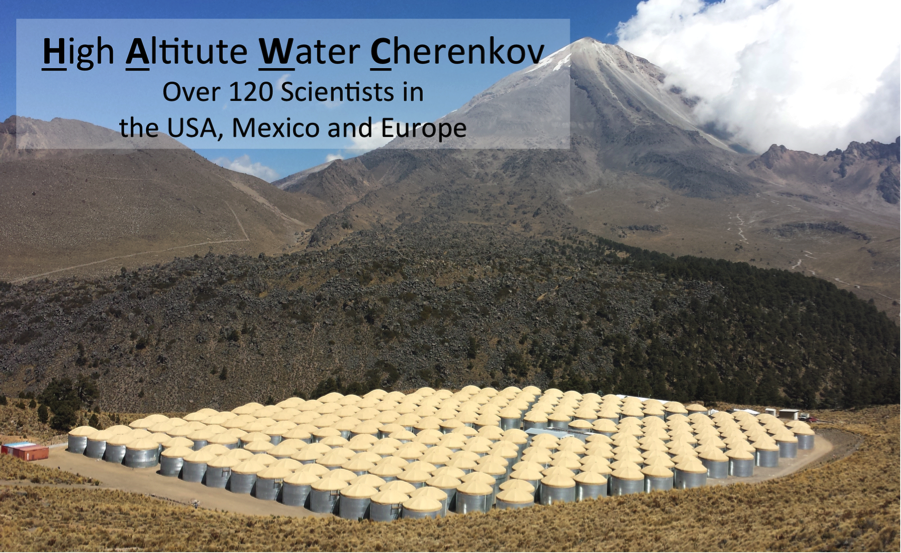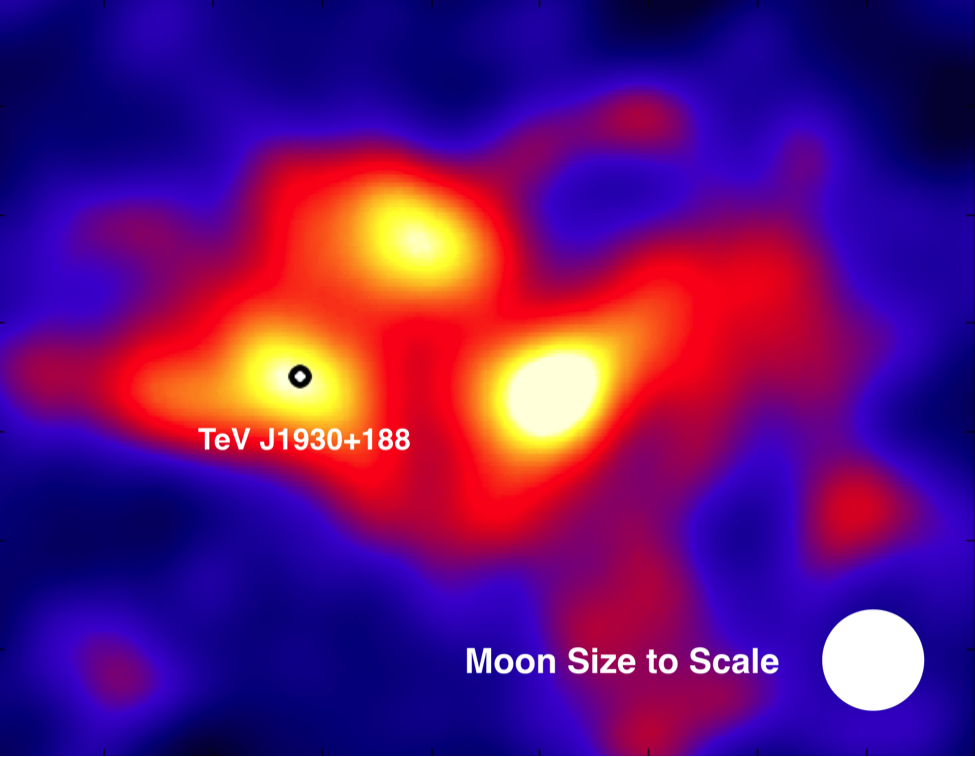Today, at the APS April Meeting in Salt Lake City, Utah, scientists operating the High-Altitude Water Cherenkov Observatory (HAWC) presented a new survey of the sky using the highest energy gamma rays ever observed. “HAWC gives us a new way to see the high-energy sky,” said Jordan Goodman, USA-spokesperson of HAWC.

To the human eye — sensitive to visible light — the sky is dominated by stars. Observing higher-energy light (ultraviolet light, X-rays, and gamma rays) requires special instruments.
With HAWC, scientists can observe the aftermath of the death of massive stars, or supernova remnants, as well as glowing clouds of electrons around rapidly spinning neutron stars, pulsar wind nebulae, and supermassive black holes in other galaxies that are devouring matter and spitting out powerful jets of particles, known as blazars. Astrophysical laboratories like these cosmic environments probe physics in a way that is not possible using earthbound accelerators. HAWC observations can help us understand these objects as well as test for new physics such as black hole evaporation and the search for dark matter.

HAWC uses 300 large water tanks, each holding 200,000 liters of purified water, at a high-altitude site in Mexico to detect particles at the ground level that are produced by very high energy gamma rays striking the upper atmosphere. Particles traveling through the water tanks produce faint blue light, or Cherenkov light, that is captured by HAWC’s sensors inside the tanks. This design, along with the high altitude, enables sensitivity that is 15 times better than HAWC’s predecessor, Milagro. “Unlike traditional telescopes, with HAWC we have now an instrument that surveys two thirds of the sky at the highest energies, day and night,” said Andrés Sandoval, Mexico-spokesperson for HAWC.
HAWC was completed in March 2015, and scientists are now presenting results from its first year of operation. The new gamma-ray sky map shows many objects along the plane of our galaxy, the Milky Way, several of which have not been previously observed. “HAWC is making new discoveries in the high-energy sky, and it’s only the beginning,” said Michelle Hui, a scientist at Marshall Space Flight Center who will be presenting HAWC results at the APS meeting.

HAWC is an international collaboration consisting of over 120 scientists from 25 universities and national labs. At WIPAC, the team led by Prof. Stefan Westerhoff is supported by the National Science Foundation (NSF) and the Wisconsin Alumni Research Foundation and includes scientist Michael DuVernois, postdoctoral researcher Thomas Weisgarber, and graduate students Zig Hampel-Arias, Ian Wisher, and Juan Carlos Diaz Velez. Weisgarber, Hampel-Arias, and Wisher will also be presenting new HAWC results during the meeting in Salt Lake City, including searches for flaring blazars and a measurement of the cosmic-ray energy spectrum.
HAWC was built with support from the NSF and the Department of Energy in the USA and the Consejo Nacional de Ciencia y Tecnología in Mexico. For more information, visit: HAWC site or HAWC Facebook page.
